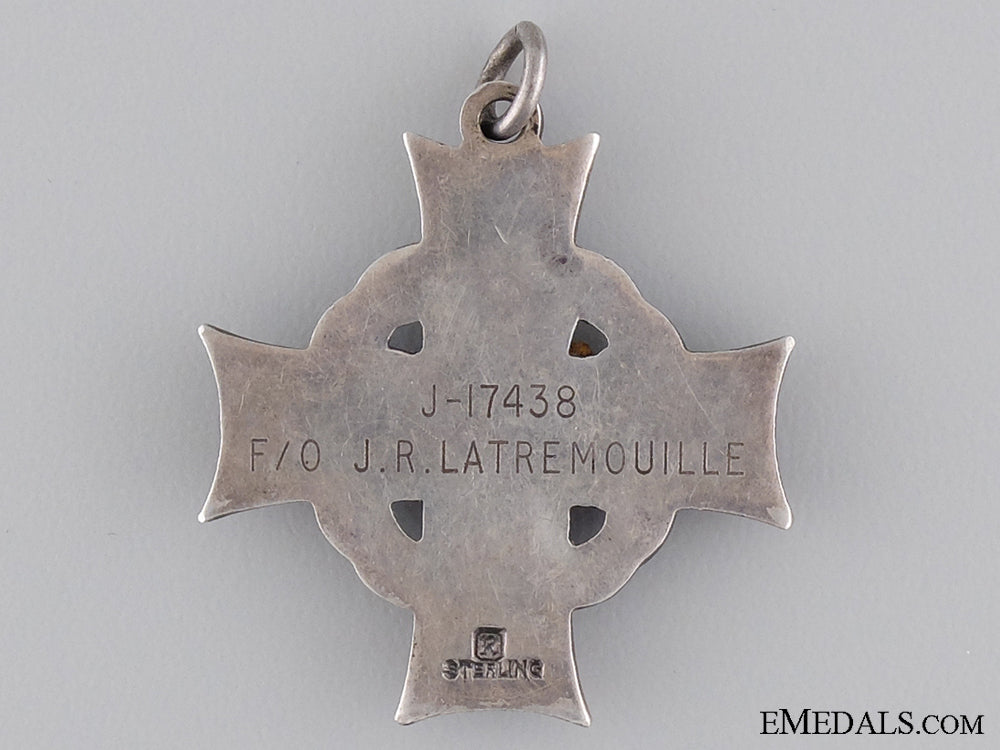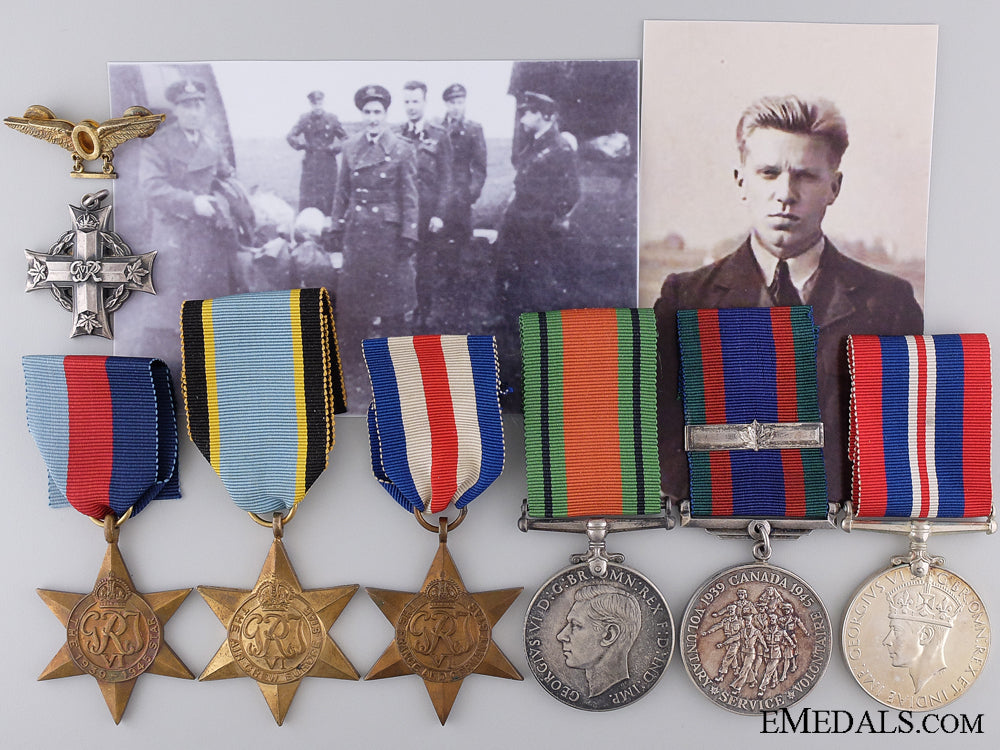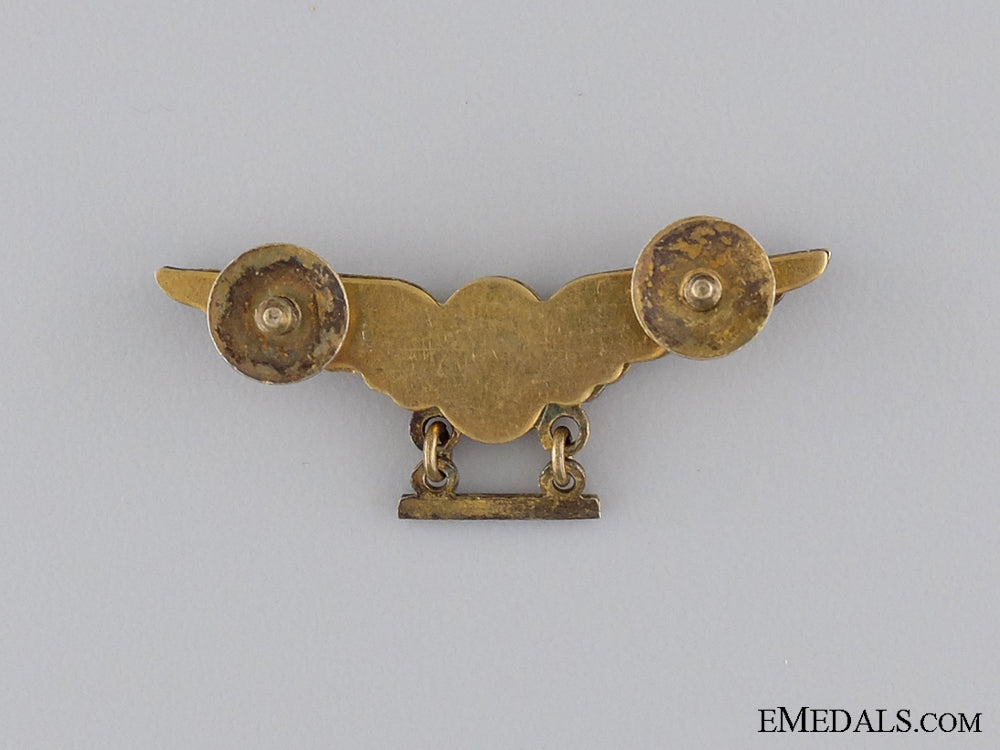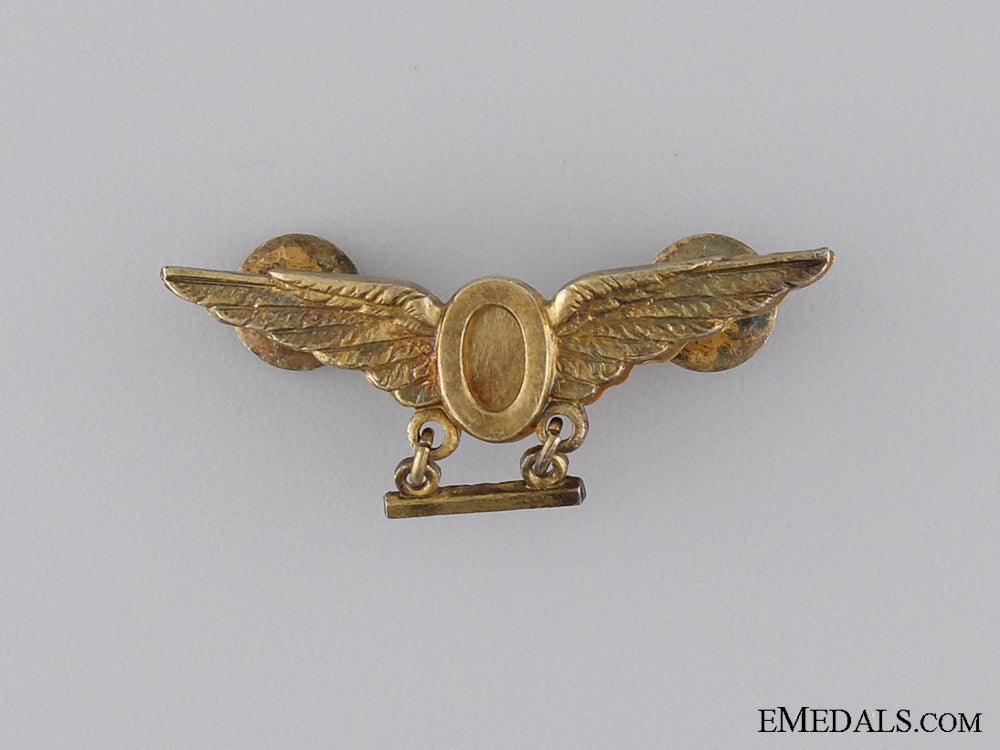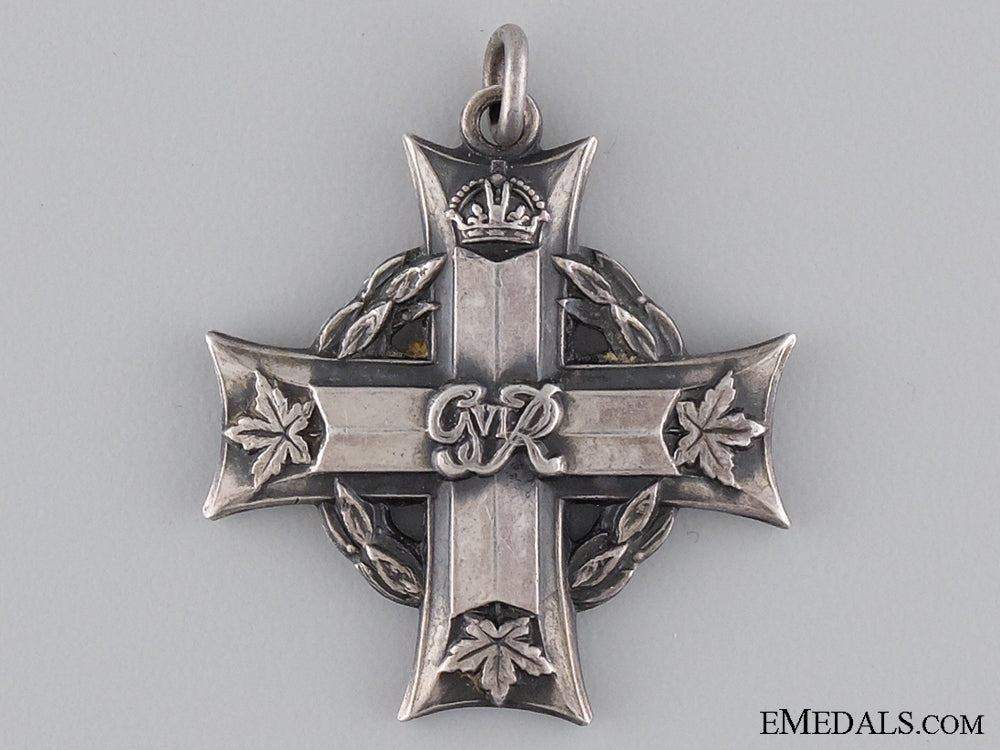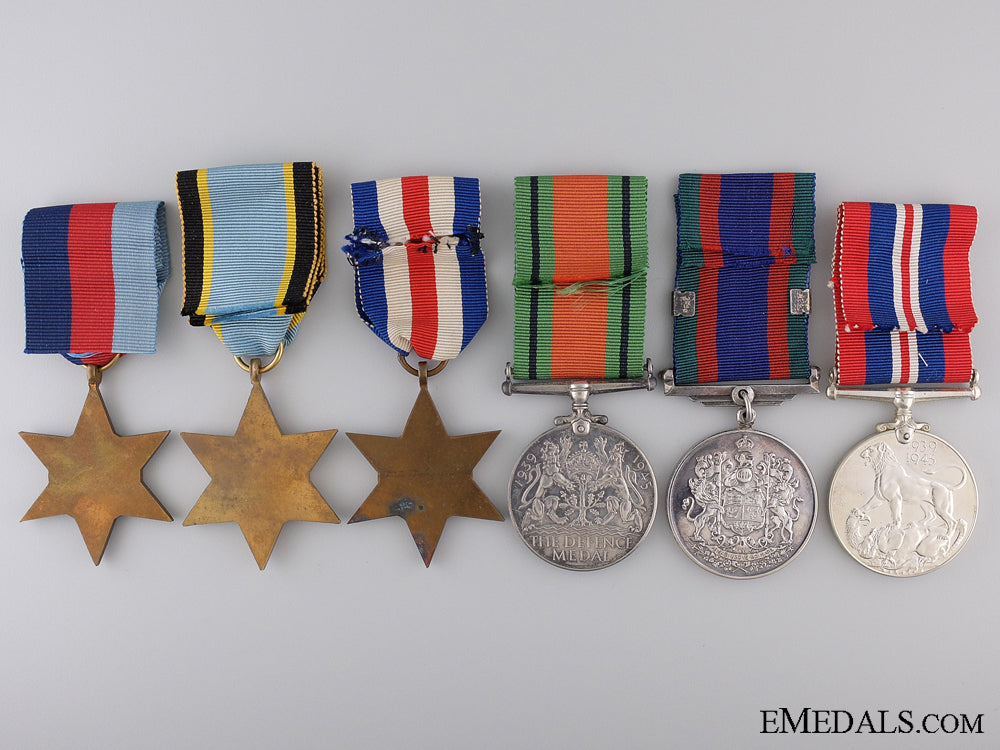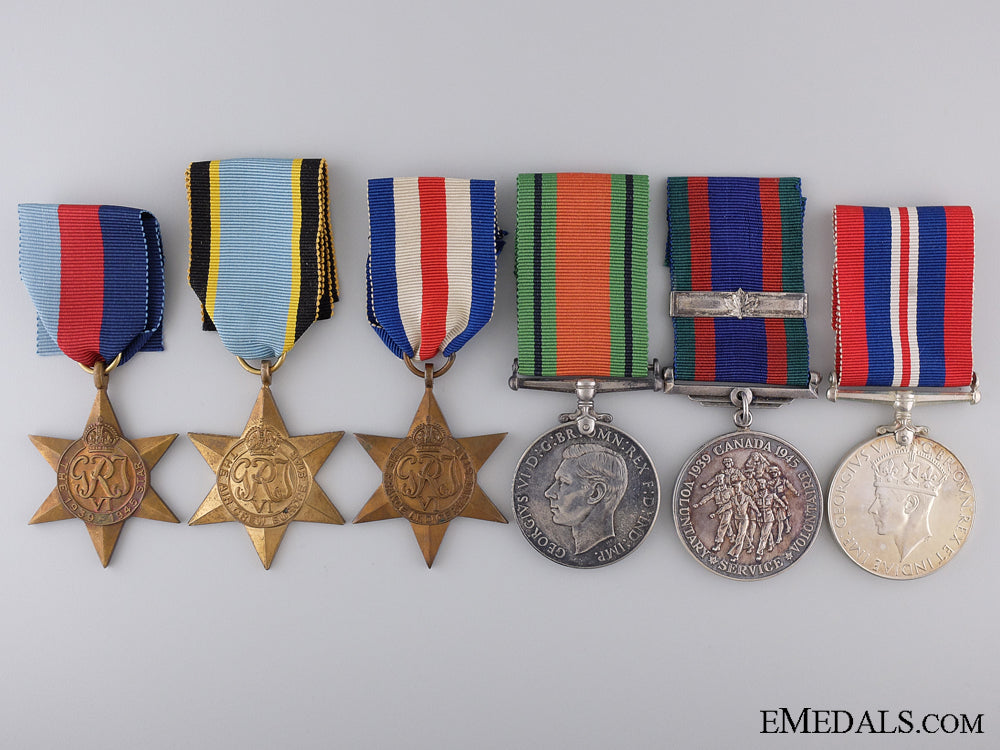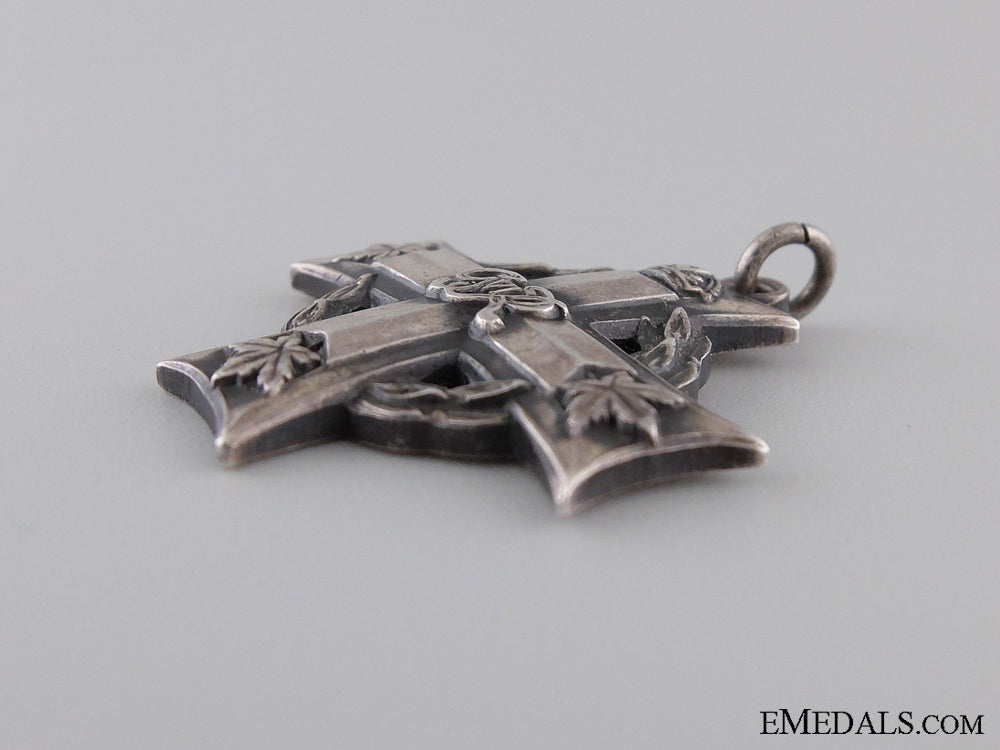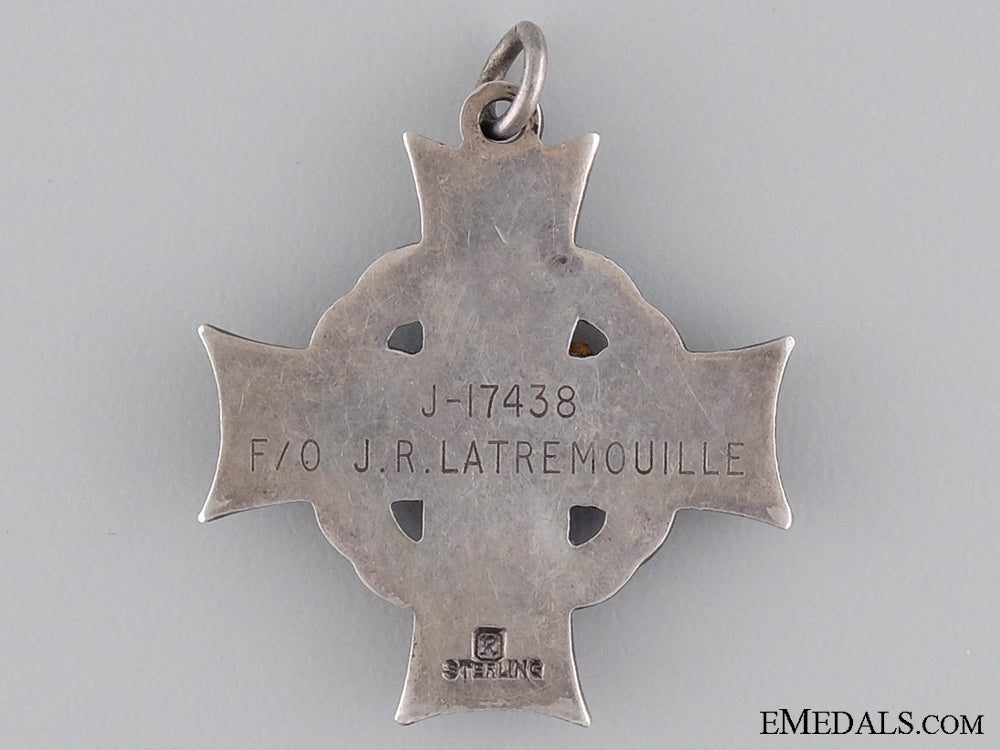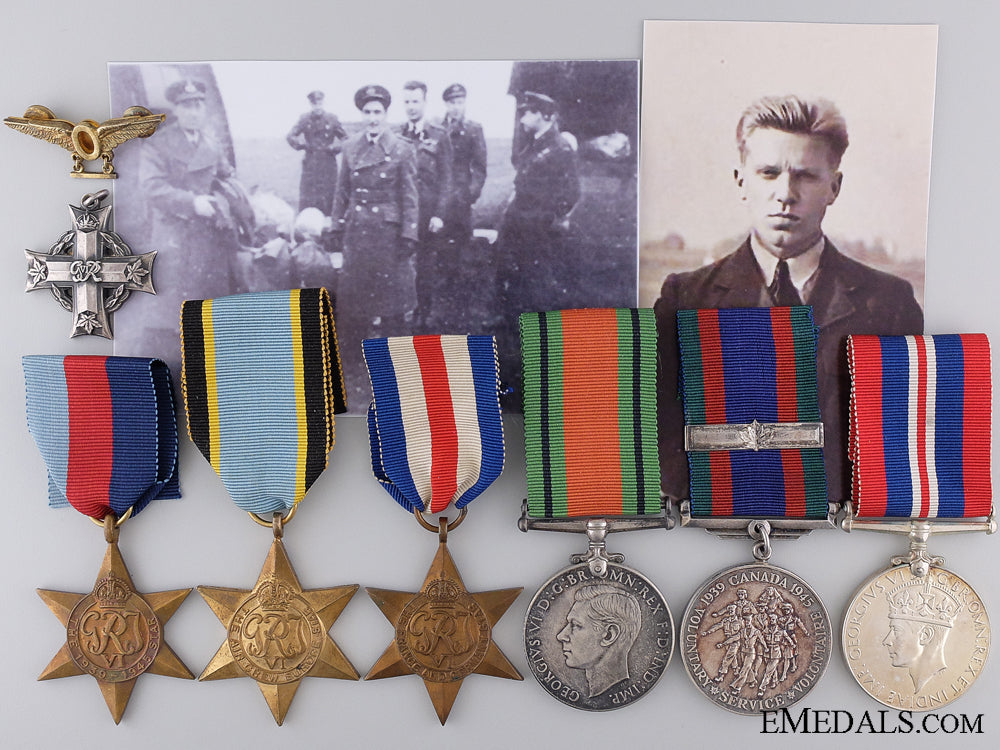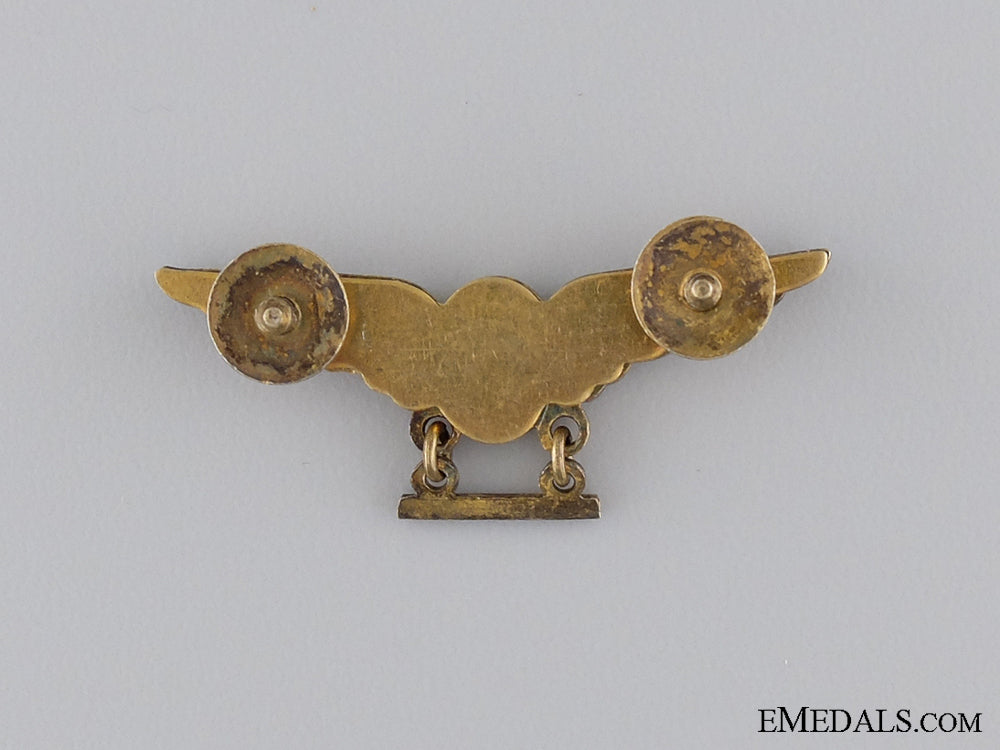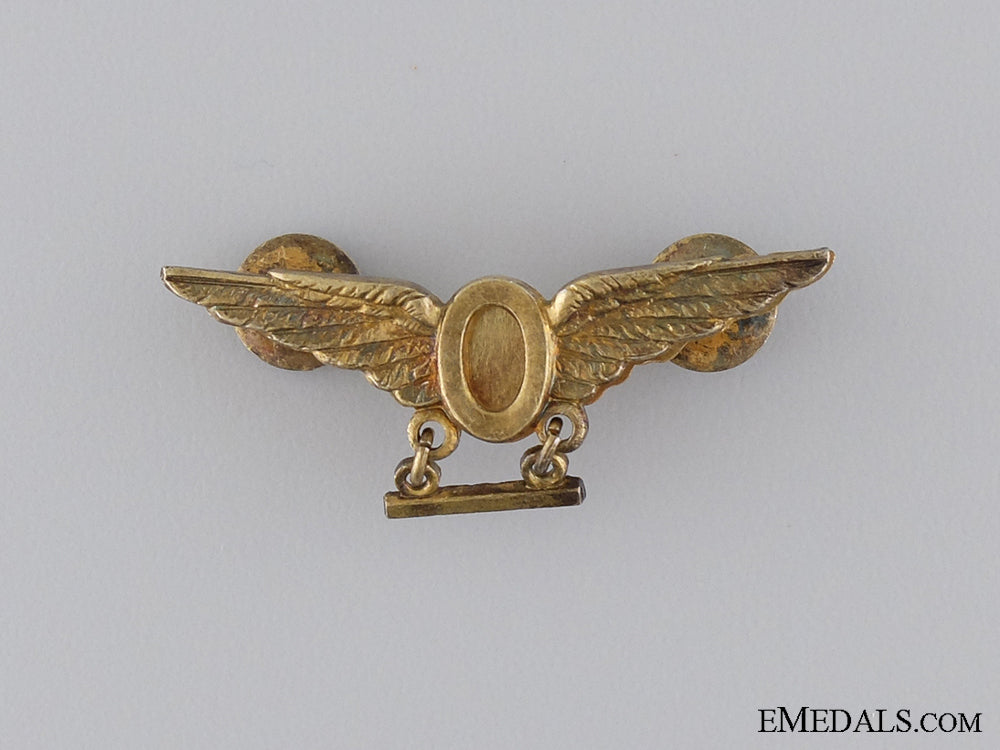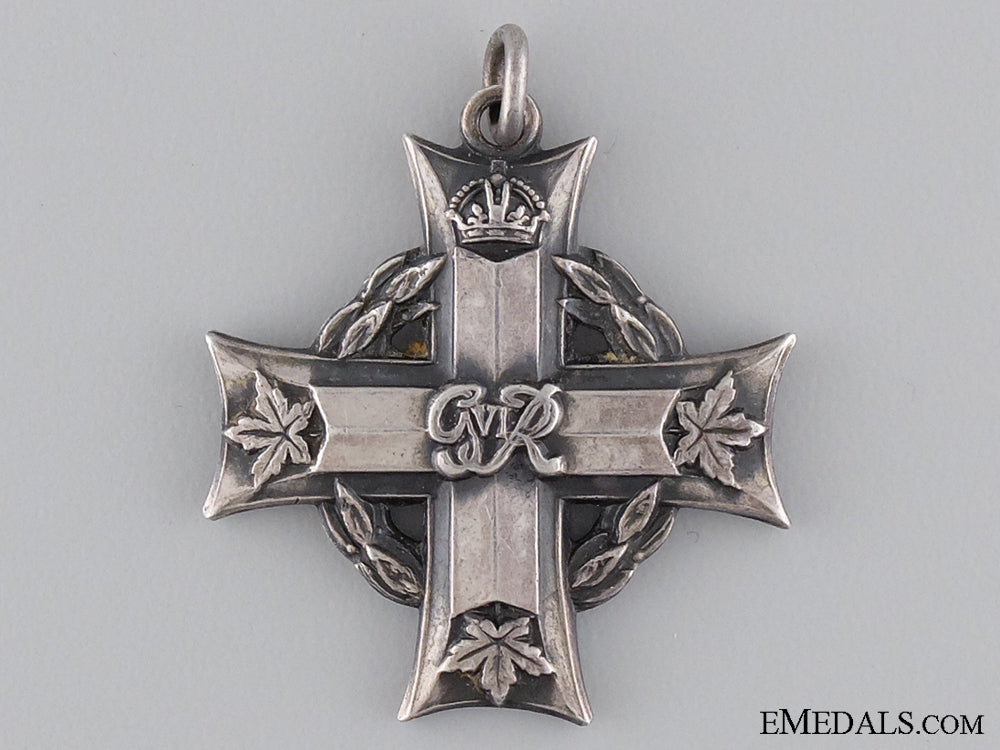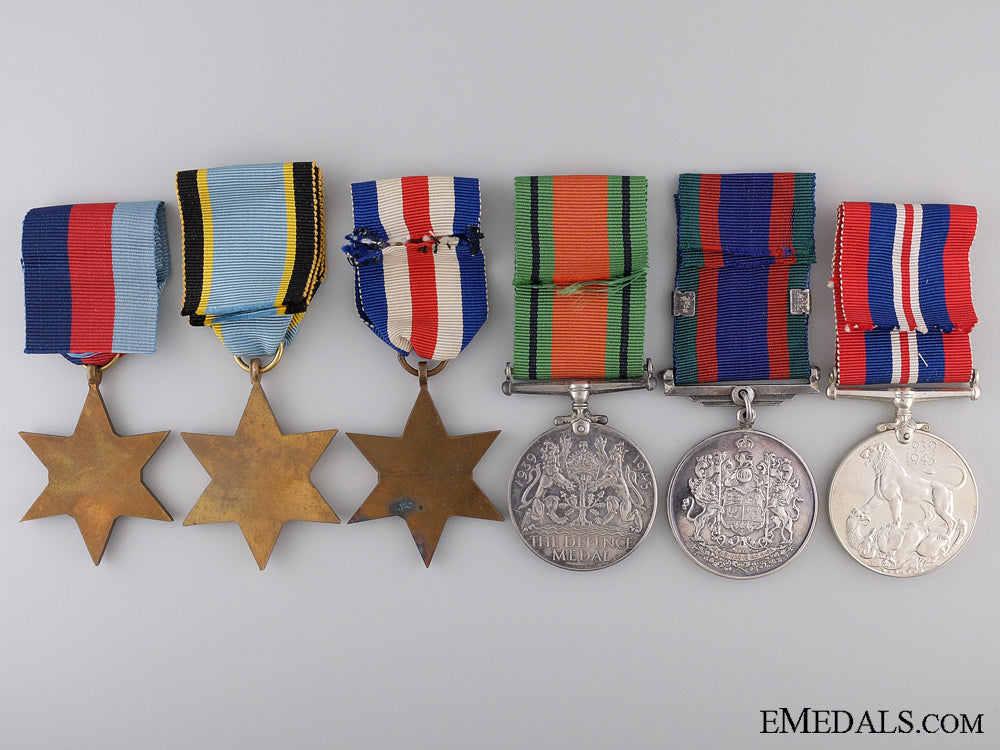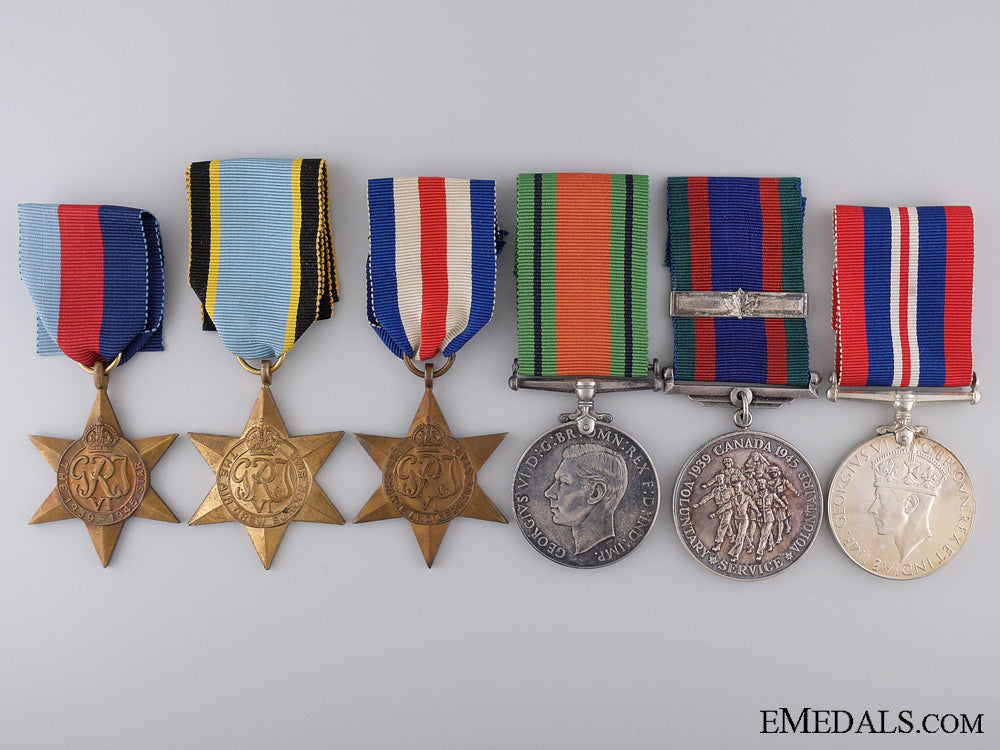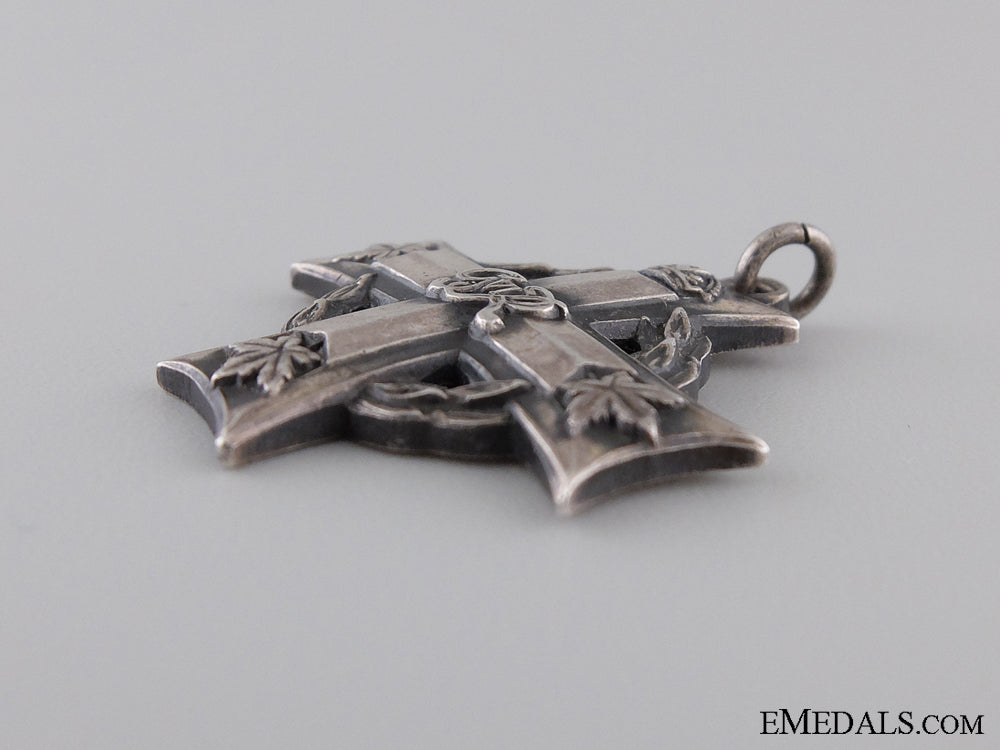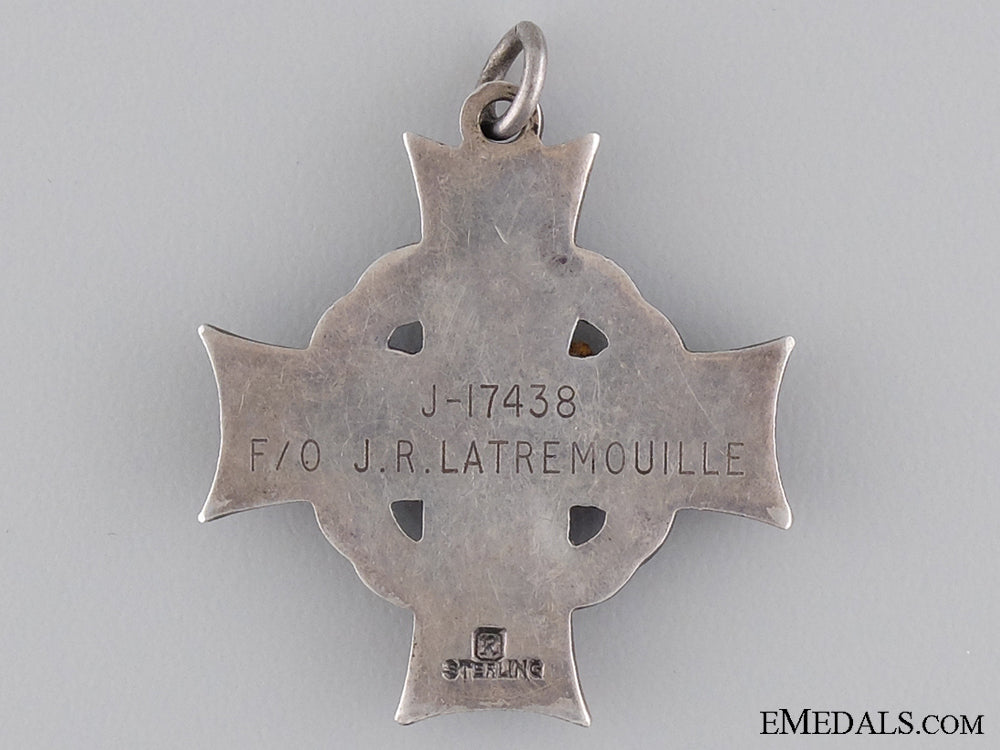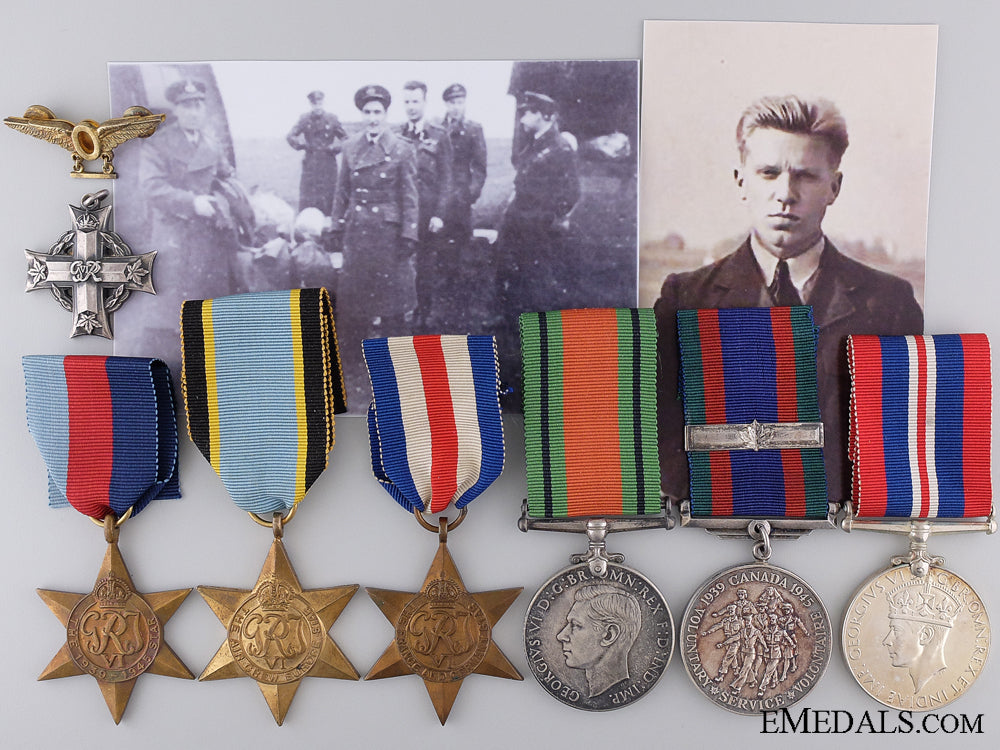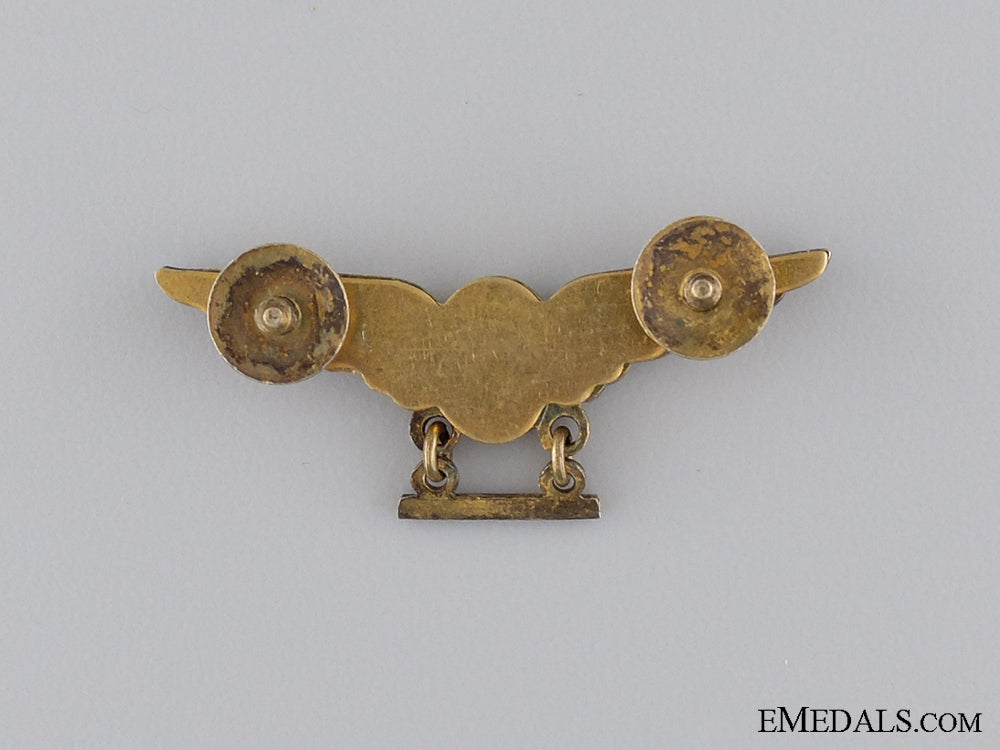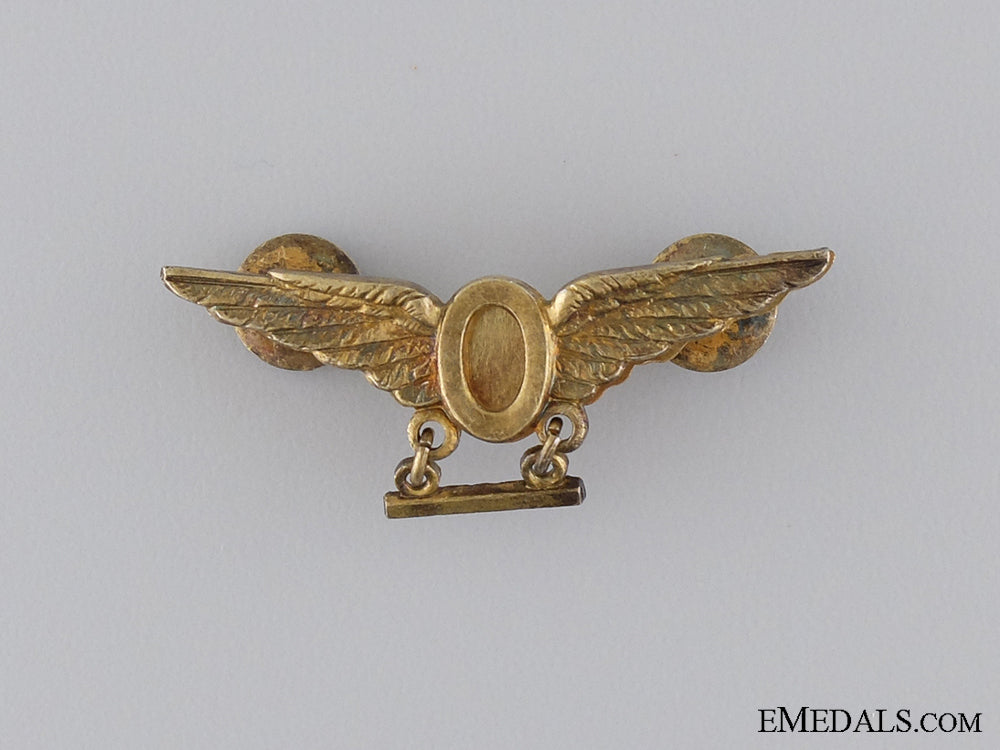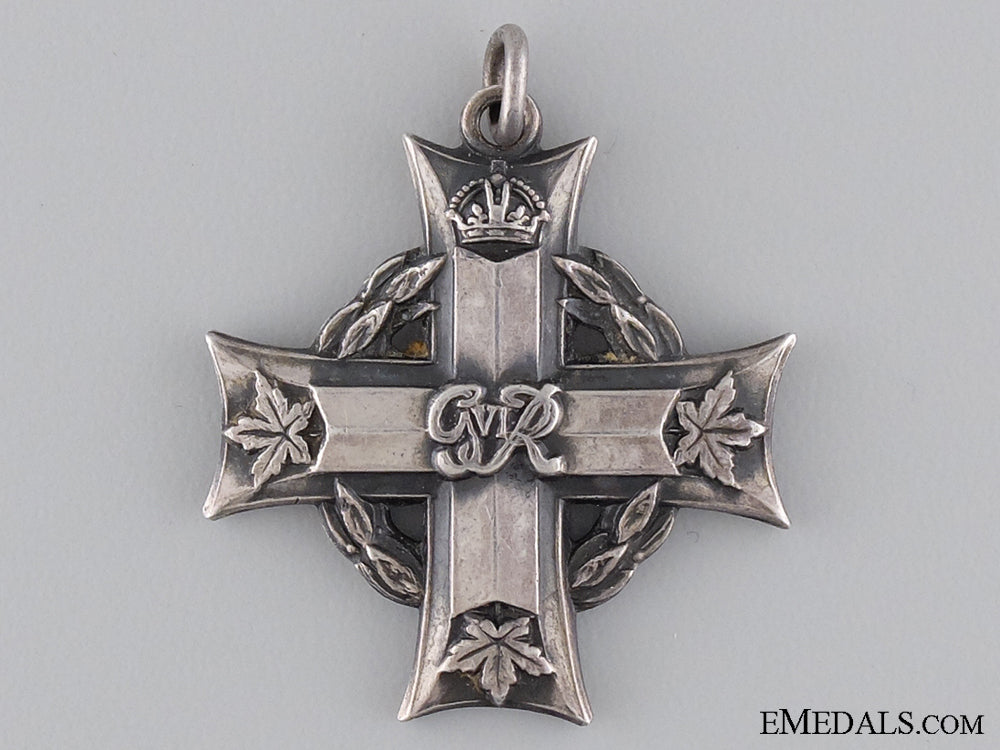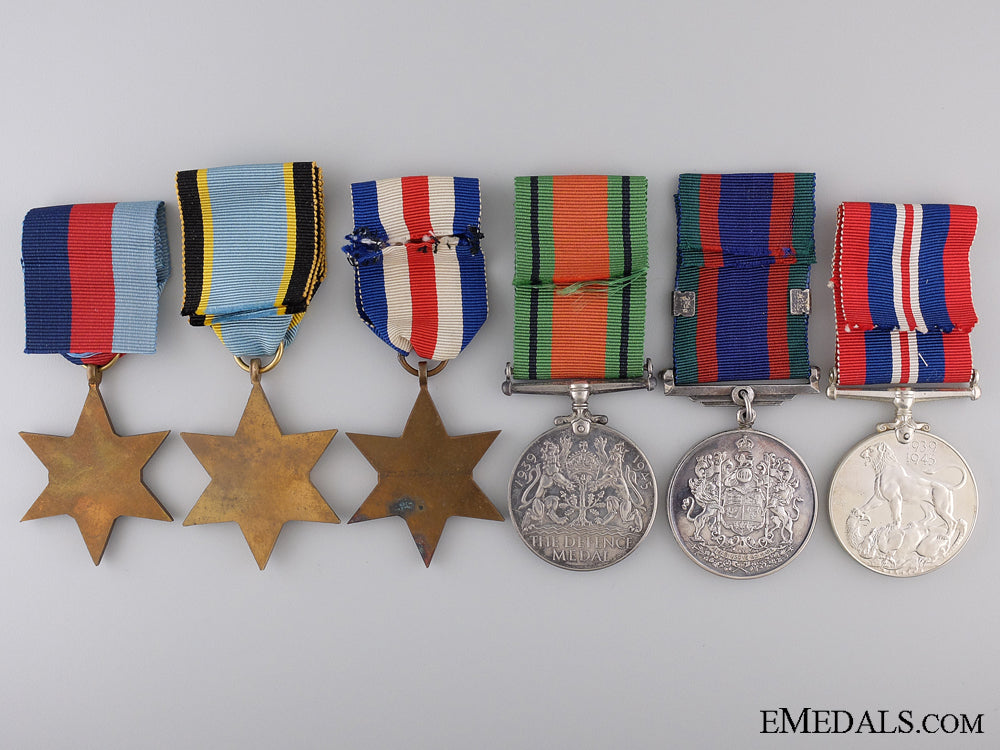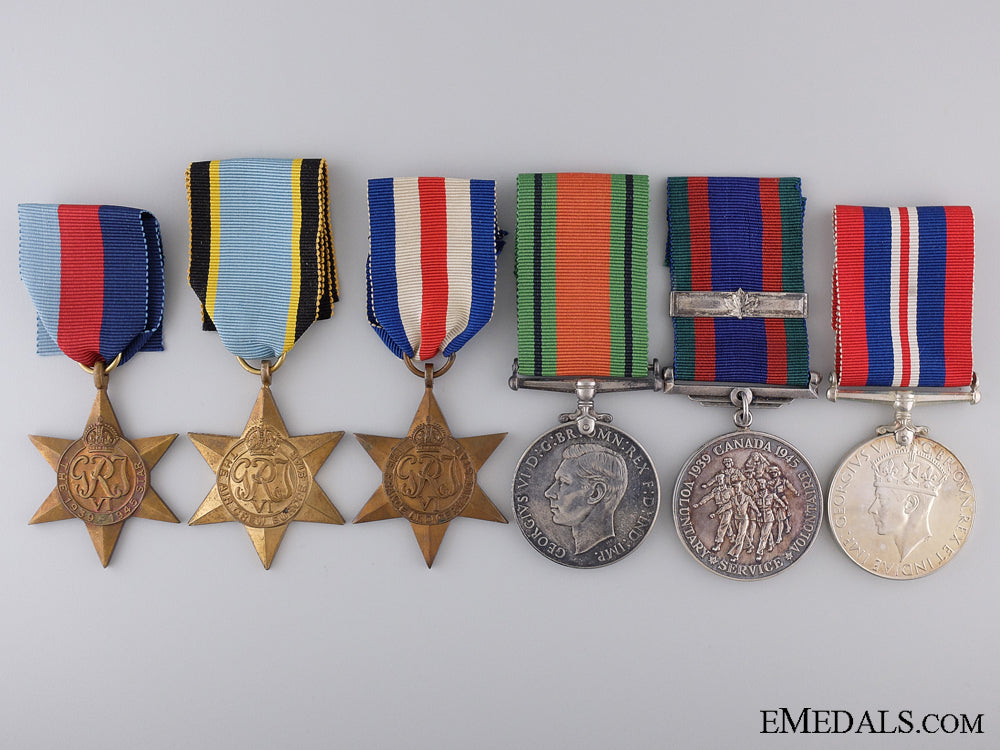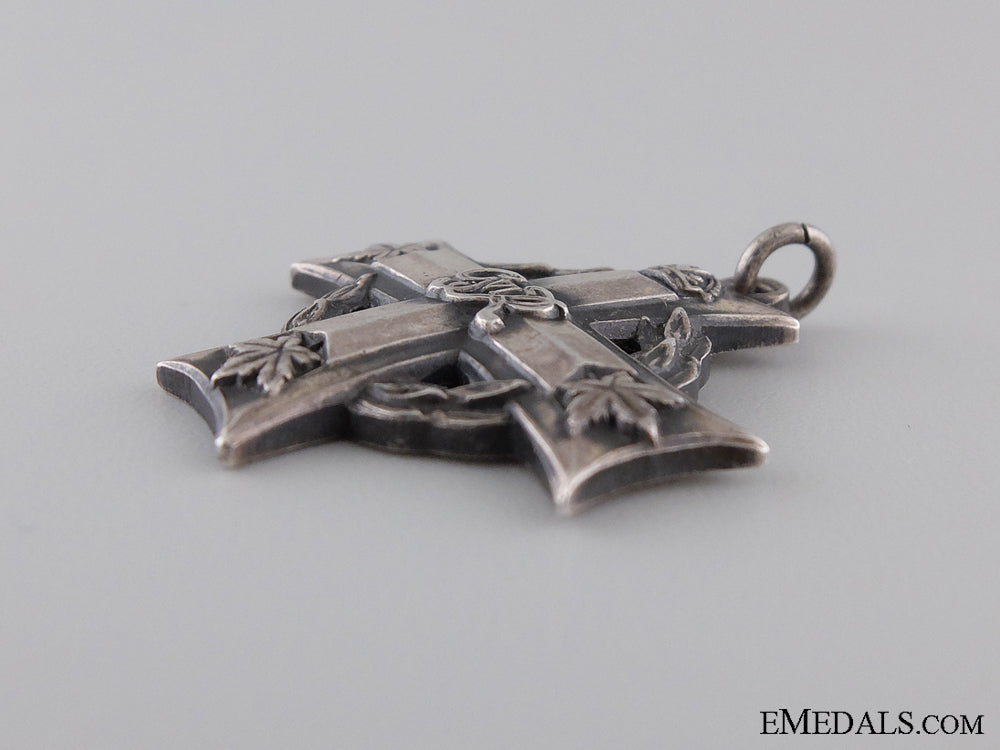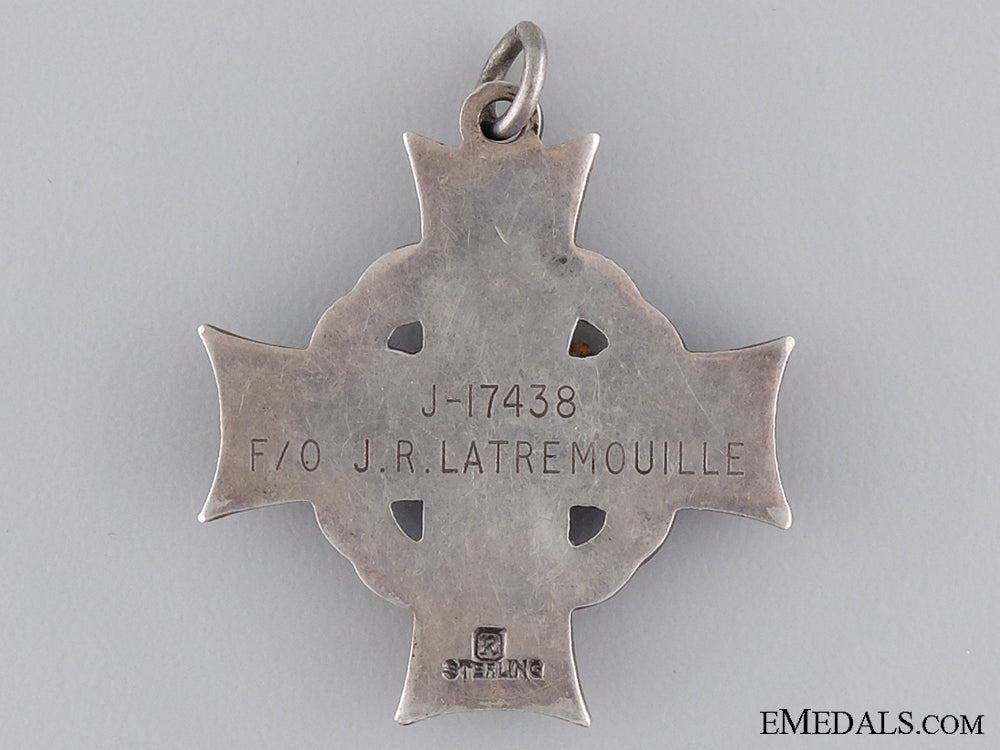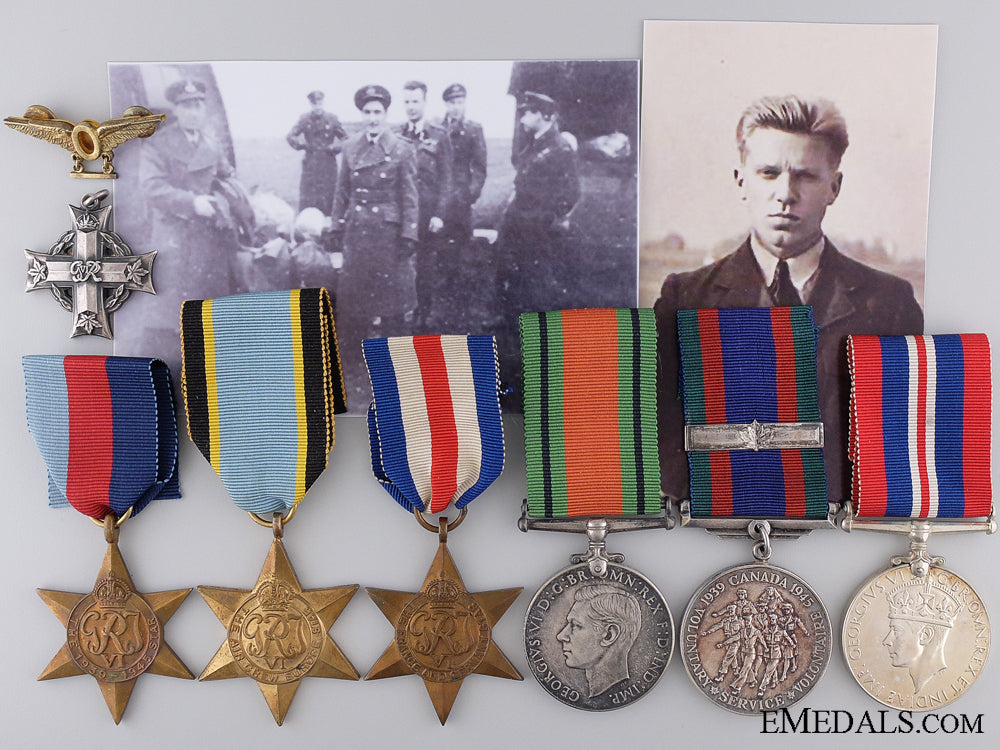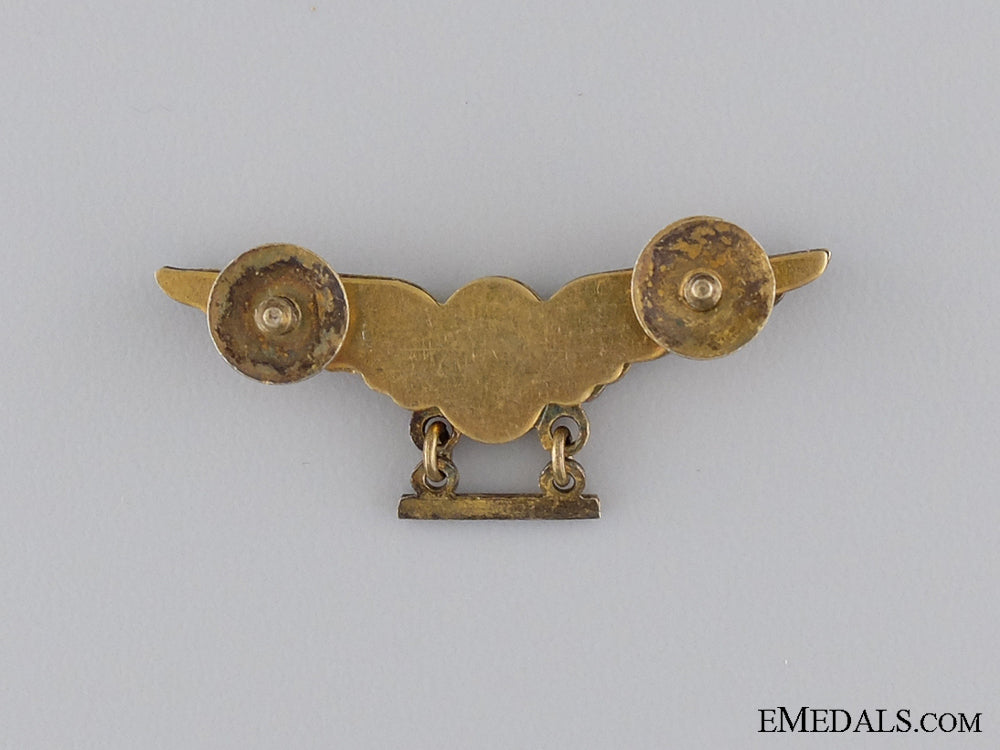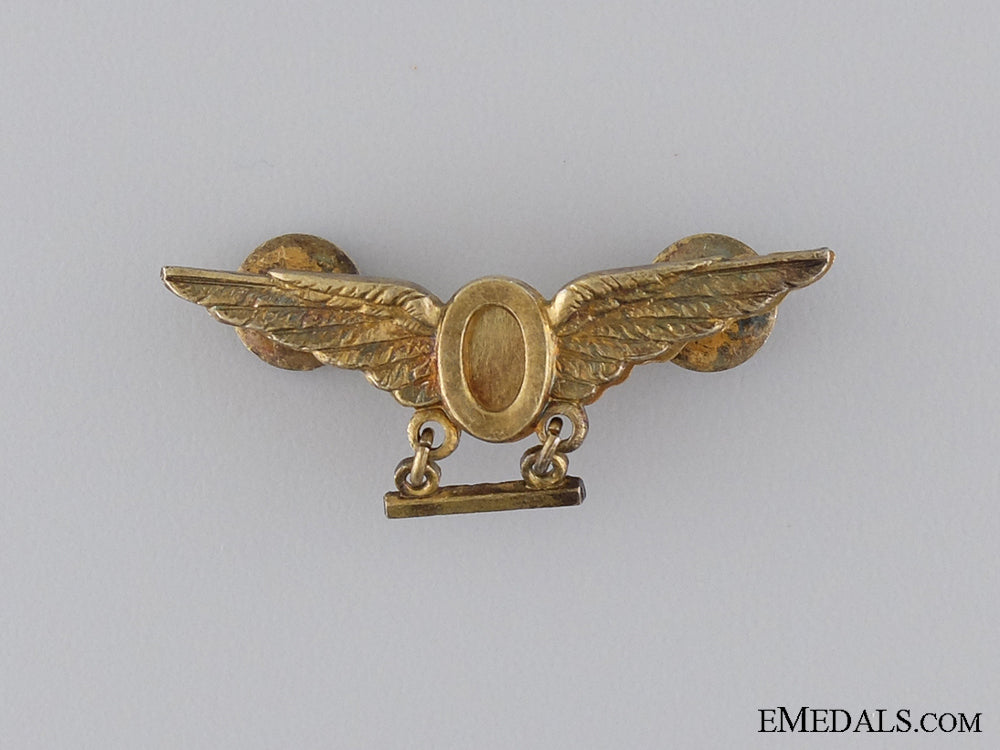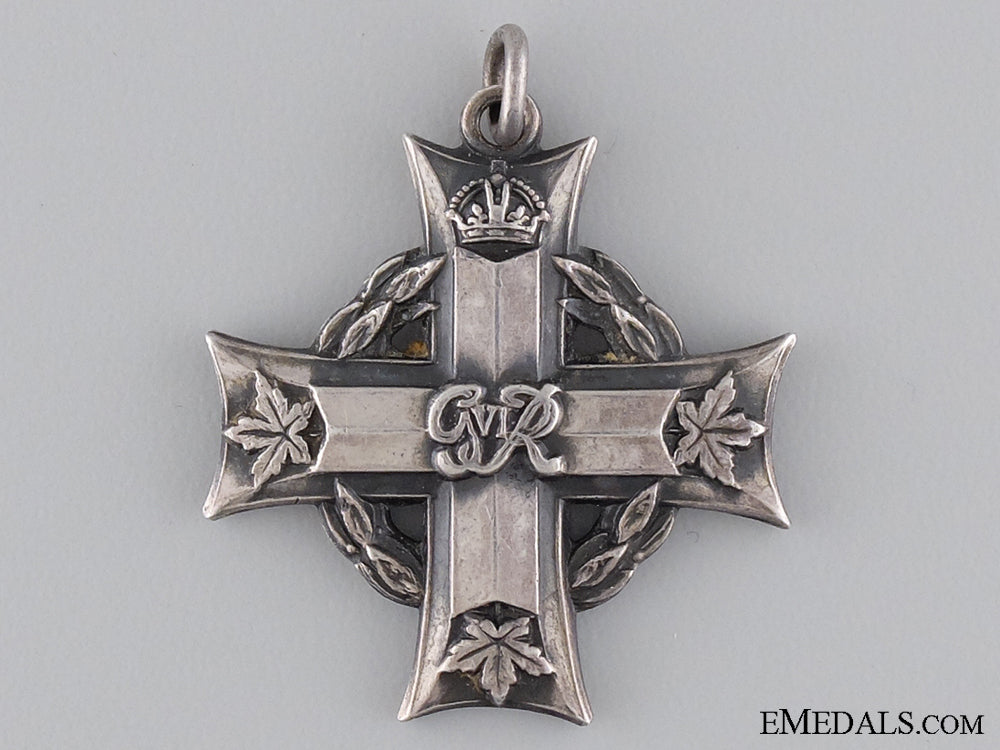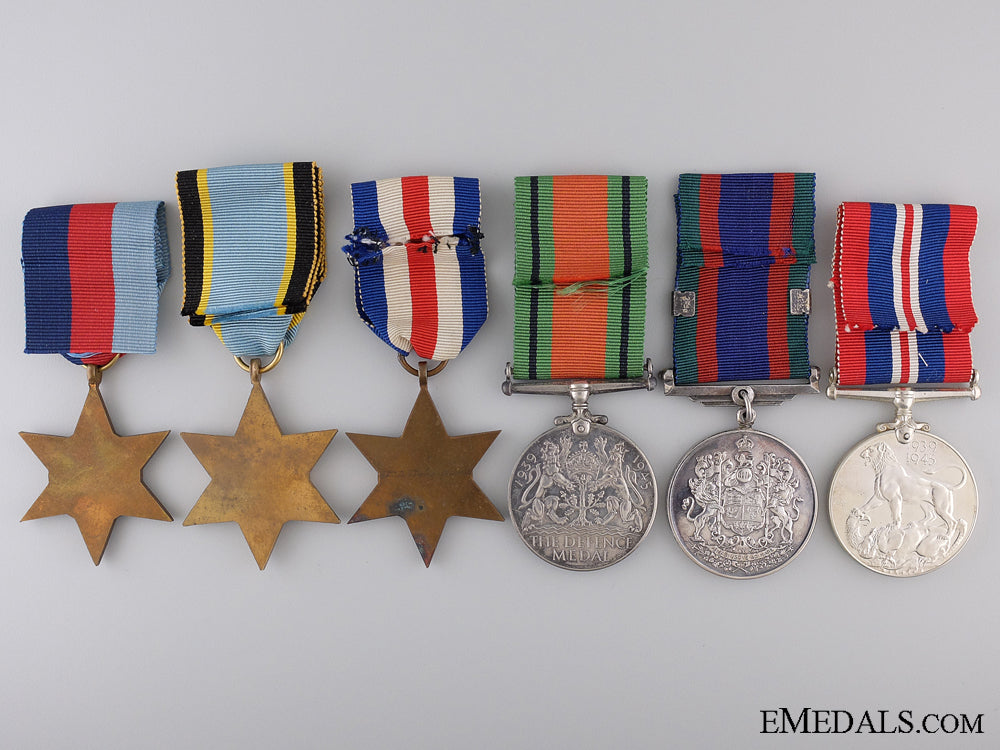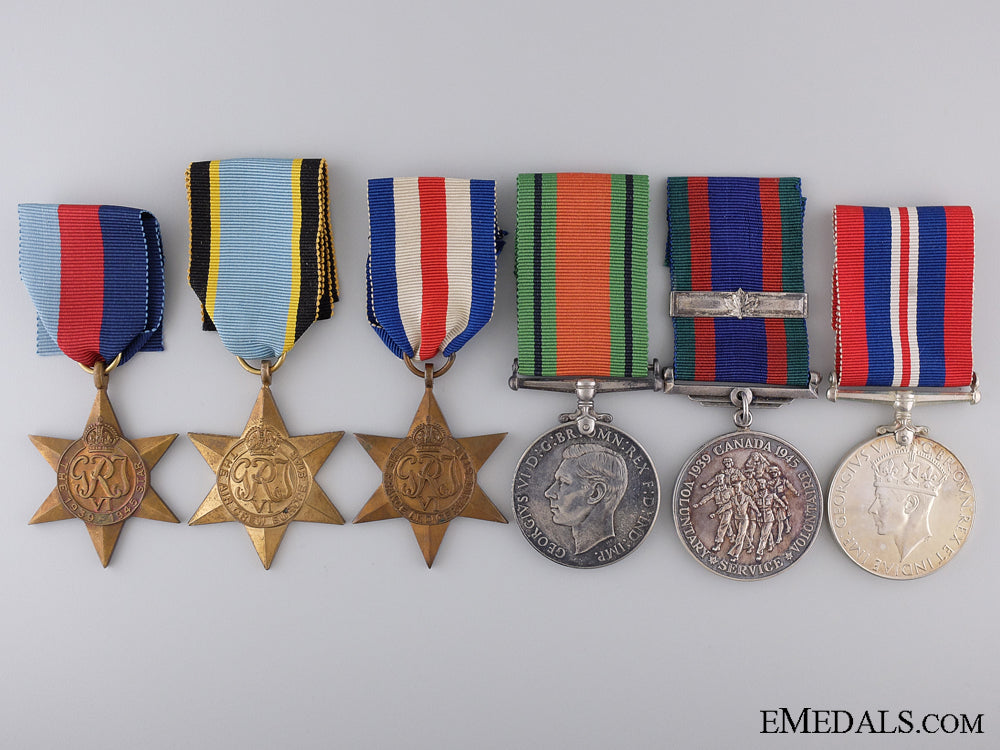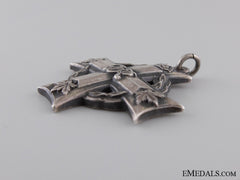Description
An RCAF Memorial Group for a 1945 Daylight Raid Over Essen - 1939-1945 Star; Air Crew Europe Star; France and Germany Star; Defence Medal; Canadian Volunteer Service Medal with Overseas Clasp; War Medal 1939-1945; and Memorial Cross, George VI (J-17438 F/O J.R. LATREMOUILLE). Naming is officially engraved on the MC, the others are un-named. Un-mounted, original ribbons on the six medals, the MC without ribbon and exhibiting light contact, the DM and CVSM with their cardboard boxes of issue, extremely fine. Accompanied by a vacant Medal Suspension Bar and a Royal Canadian Air Force Birks-Made Operations Wings Badge, Two Tour Version (sterling silver gilt, maker marked "BIRKS" and marked "STERLING" on the reverse, 13.5 mm x 38.5 mm, with dual screwbacks and support plate).
Footnote: Joe Richard Latremouille was born on January 5, 1923 in Toronto, Ontario, the son of John Anthony Latremouille and Maude (nee Coates) Latremouille. He had two brothers, Edward and Warren, and two sisters, Audrey and Lorraine. He enlisted with the Royal Canadian Air Force on January 28, 1941. Later that year, he attended No. 1 Bombing & Gunnery School in Jarvis, Ontario, Course 28, from September 29 to November 8, 1941. Latremouille graduated as an Air Gunner, with Group Captain G.W. Watt, officer commanding at No. 1 B & G, pinning wings on the largest group of airmen to graduate from the school since its opening, stating "Your work is done here but your most important work is just starting. You gunners have to protect the aircraft and fire on ground targets as well as attack enemy aircraft." In England, Latremouille was placed with 434 Squadron, flying bombing operations over Germany during the Second World War. The unit was first formed at RAF Tholthorpe, near Easingwold, North Yorkshire, United Kingdom on June 13 1943, flying the Handley Page Halifax Mk V. In May 1944, the unit received Halifax Mk IIIs to replace its Mk Vs. The Squadron was adopted by the Rotary Club of Halifax, Nova Scotia and to show its connection to the city, adopted the nickname "Bluenose Squadron", the common nickname for people from Nova Scotia and a tribute to the schooner Bluenose, with an image of the schooner appearing on the squadron badge. The Squadron moved to RAF Croft in December 1943 and was re-equipped with Avro Lancaster Mk Is and Mk Xs in December 1944. During the Second World War, the unit flew 198 missions, including 178 bombing, 17 mine laying, one diversionary and one sea search. This was made up of a total of 2,582 individual aircraft sorties, including 45 prisoner of war airlift sorties. It flew 14,622 operational flying hours and dropped 10,358 tons of bombs plus 255 mines. Aircraft in the Serial Number Range KB700 - KB999 were one of 300 Lancaster Mk Xs ordered from Victory Aircraft of Canada and delivered from September 1943 to March 1945 for ferrying to the United Kingdom. Up to KB774 were initially fitted with Merlin 38 engines and all subsequent models with Merlin 224 engines. KB834 was delivered to No. 434 Squadron in December 1944. During the Second World War, on March 11, 1945, the end was near for Nazi Germany as the allies were driving Hitler's forces of evil into forced retreat throughout what once was the Nazi's occupied fortress Europe. Seeking to cut off the vital German supply lines 1,079 allied aircraft, 750 Lancasters, 293 Halifaxes and 36 Mosquitos, all of Royal Air Force bomber groups, departed for a daylight operation on the city of Essen, Germany. This mission is recorded historically as the second largest bombing attack of the Second World War, surpassed only by the following night’s 1,108 plane attack on Dortmund. It was also one of the few daylight bombing missions the RAF was to have participated in. The enormous numbers of allied aircraft that were involved in this operation was reported by Air Force veterans who took part to be some eight miles long and some five miles wide. 4,661 tons of bombs were dropped on H2S navigational radar directed sky markers through complete cloud cover. The attack was accurate leaving Essen virtually in ruins until the American 9th Army took control over the city on April 10th. This was the last mission on Essen, which had been attacked many times in the early years of the war with such disappointing and costly results. Three Lancasters were lost on this Essen attack. Wing Commander Ralph Davenport's KB-853 of 431 Squadron with all crewmen lost, Flight Officer Eric Gibbins in NG-201 of 153 Squadron on their 26th operation with all aircrew lost and that of Flight Lieutenant Raymond John Fern of KB-834 of 434 Squadron. The last mission on Lancaster KB-834 began on the morning of March 11, 1945, as KB-834 was prepared for this Essen daylight operation by Royal Air Force ground personnel at its airfield base in Croft, England for what was to be its final fateful mission. The crew were all Canadian commissioned officers serving with the Royal Canadian Air Force, except the Flight Engineer, thirty-seven year old Pilot Officer William Jones of Liverpool, England, who was serving with the Royal Air Force. He had served previously in 419 Squadron and was serving on his first tour. The rest of the crew were all serving on their second tours. This was a significant accomplishment for these airmen as RAF bomber losses in the war were staggeringly high, with records indicating bomber command having suffered 51% casualty rates. 434 Squadron in fact was known as the unlucky squadron for having had far higher casualty rates than the other squadrons. This was to be the Fern crew’s fifth operation and their third in a row in KB-834. From mid-February to mid-March, they had flown ten missions, targeting Dresden, Chemnitz, Dortmund, Duisburg, Pforzheim, Mainz, Neuss, Manheim, Chemnitz and Dessau, now were destined for Essen. Their primary mission objective on the Essen bombing attack was to destroy the railway supply yards and railway lines in the industrial heart of Germany, the city of Essen, to try to prevent the transfers of munitions and materials to the German war front by enemy rail cars. RAF records state Essen was second only to the capital city of Berlin in terms of total allied bomb tonage dropped during the war. Their mission began with a morning departure at 1138 hours with the Fern crew and Lancaster KB-834 lining up in takeoff formations with dozens of the other bombers on the three Croft runways. KB-834 was powered by four Rolls-Royce Packard Merlin 1,620 hp inline engines, which required the skilled piloting of Flight Lieutenant John Fern, who was highly regarded by his crew as being an experienced and excellent Lancaster pilot. After takeoff, they positioned into flight formation with the other bomber groups, with each crew member carefully checking over their bombers operations and equipment and their mission assignments. By this time in the war, the Germans actually knew when there was going to be an allied bombing attack, as they were able to pick up the wireless operators’ test transmissions before takeoff, thus allowing the Germans to ready their defences, hours in advance of the approaching bomber streams. No doubt this was a major contributing factor in the high numbers of RAF bomber losses. Navigating on board Lancaster KB-834 was Flight Lieutenant George Rowe DFC, who was one of 4,018 RAF airmen awarded the Distinguished Flying Cross Medal during the war. He was awarded the DFC on August 6, 1943, when he previously served with 432 Squadron 6 Group that was based at Eastmoor, Yorkshire, England, for acts of valour, courage and devotion to duty performed while flying In active operations against the enemy, as published in the London Gazette on August 17, 1943, the citation reading: “This officer has displayed high courage, ability and efficiency during many operational sorties over enemy territory. His outstanding skill as a Navigator has been an inspiration to his crew and, in a large measure, responsible for their success on operations. Pilot Officer Rowe, who has displayed gallantry and devotion to duty in the face of the heaviest opposition, has set up an excellent operational record.” Rowe set their course on to Essen, taking KB-834 with the RAF bomber streams straight south over England, then heading east over the straights of Dover and flying right across the English channel towards the northern coast of France. The bomber groups then travelled over France and Belgium, climbing steadily all the way, heavily loaded with their bombs and then into German airspace, reaching their scheduled bombing altitude heights of between 17,000 and 22,000 feet in an effort to avoid flak from the dangerous and accurate German anti-aircraft defences. The RAF bomber streams and KB-834 reached their objective target in the afternoon, over the Nazi war machine's railway supplies at Essen, at approximately 1522 hours, over complete cloud cover. This was now a very dangerous and focused time in the mission for these well-trained and experienced RAF airmen, as they were constantly on alert, not only for German fighters like the ME-109 attacking the bomber formations and exploding flak but also from falling ordnance released from the bombers flying at higher altitudes. Right up to this point in their mission anti-aircraft fire was not that heavy and they had not been attacked by any enemy aircraft. Two reasons likely accounted for the lack of German fighters present on this attack, heavy cloud cover and also, by March of 1945, the strength of the German's Luftwaffe and their airbases had been severely decimated. KB-834 carried a standard 10 bomb load ordnance consisting of the following, 1 blockbuster 4,000 lb bomb that resembled a long large barrel which crews called a cookie, 3 high explosive 1,000 lb bombs & 6 small bomb canisters. The SBC's carried either 236 x 4 lb or 24 x 30 lb fire starting incendiaries which were fuse-timed to explode 600 meters over the strike zones. The shell that hit on KB-834 also blew out all of the cockpit windows of the trailing Lancaster that was following about 100 feet behind and 50 feet above as reported by its crew upon returning safely to base in Croft. The aircraft was hit by Flak and crashed within seconds of completing its bombing run, plunging into the target area. Six members of the crew of seven were killed. In addition to J-17438 Flight Officer (Wireless Operator/Air Gunner) Joe R. Latremouille of Toronto, Ontario, age 22, also lost were four other Royal Canadian Air Force airmen: J-15681 Flight Lieutenant (Pilot) Raymond John Fern of Christopher Lake, Saskatchewan, age 25; J-16574 Flight Lieutenant (Navigator) Alfred George Rowe DFC of Toronto, Ontario, age 24; J-18182 Flying Officer (Bombardier/Bomb Aimer) Thomas Donovan Copeland of Dundalk, Ontario, age 25; J-18994 Flying Officer (Mid Upper Gunner) Gibson Scott of Vancouver, British Columbia, age 26; along with Royal Air Force Volunteer Reserve airman, 185500 Pilot Officer (Flight Engineer) William T. Jones of Liverpool, England, age 37. The seventh member, Royal Canadian Air Force airman J-19723 Flying Officer (Rear Gunner) Joseph Alfred Henri Bernard “Ben” Marceau of Montreal, Quebec, age 24, survived the direct shell hit and the fiery decent and crash of his Lancaster, as the force of the explosion blew him right out of his armour-plated stripped FrazerNash40 rear turret. Falling from their bombing altitude height of 21,300 feet, severely wounded and unconscious he then came to at approximately 2,000 feet amidst heavy clouds. Incredibly he reached for and managed to grab and pull open his parachute cord and landed very heavily in a farmer’s field near Essen. Two Russian men who were very likely working in the fields as Prisoners of War forced labourers saw the airman parachute to the ground and rushed over to his aid. Marceau was badly injured in the legs, shoulders, eye and face and they helped the wounded Canadian by using his first aid kit to dress his wounds. He then gave them his two survival kits that he was carrying as he wanted the men to keep them, knowing that his capture was soon at hand as he could see that three German soldiers were running towards them from a distance away. When the soldiers arrived, they immediately searched him three times over for weapons or documents. Badly injured with wounds to the head and leg caused by the flak fire, he was taken to a local barracks where he was treated before being interrogated and then moved again. Dr. Otto Trush, the commanding officer of one of the hospitals Marceau was being treated in, was credited with possibly saving his life, as a very determined SS officer named Captain Schmidt identified him as an allied airman and attempted several times to try to have him released into the custody of the German Wehrmacht. This hospital officer was able to prevent this from happening, by arguing against it, stating that the Canadian airman was not fit to be transferred by the SS. Had the SS been successful in taking Marceau into their custody, he could very well have died from either neglect or he could have been executed by the Nazi Gestapo, as many other downed allied airmen had been. Marceau was very fortunate to have survived through this time, as an injured prisoner of war spending the next seven weeks in hospitals in Germany and in Belgium, before being liberated in the Ruhr by American forces just five days before Victory In Europe Day and the end of the war. He was invalided to the R.C.A.F. Wing at Queen Victoria Cottage Hospital, East Grinstead, Sussex for further treatment to his burns and injuries before returning to his wife in Canada, where he was to undergo many years of hospital treatment. The bodies of the six Lancaster KB-834 airmen were later recovered from Plot B at the Sud-West Friedhof and taken to the Reichswald Forest War Cemetery for burial. Latremouille is one of those buried there, Grave Reference: Joint Grave 1. B. 9-10. and is commemorated on page 533 of the Second World War Book of Remembrance. He was awarded the 1939-1945 Star, the Air Crew Europe Star, the France and Germany Star, the Defence Medal, the Canadian Volunteer Service Medal with Overseas Clasp and the War Medal 1939-1945 for his war service. His mother, Maude Latremouille, received his Memorial Cross. In addition, the five deceased RCAF airmen, Flying Officer Latremouille, Flight Lieutenant Fern, Flight Lieutenant Rowe, Flying Officer Scott, Flying Officer Copeland and the surviving Flying Officer Marceau were all awarded Operational Wings for gallant service in action against the enemy and for courageously having completed thirty missions or more. In 2005, the five RCAF crewmembers of RAF Lancaster KB-834, who served and gave their lives in air operations during the Second World War had their names inscribed on Canada's new Bomber Command Memorial Wall at the Bomber Command Museum of Canada, in Nanton, Alberta.


